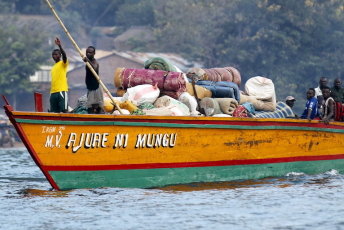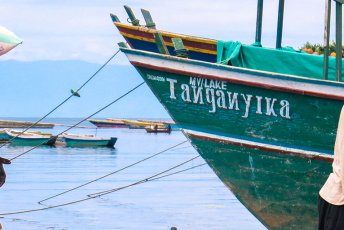Imagine a world where elephants only die of natural causes. Is a world without the illicit ivory trade possible? One where no species faces the pressure of imminent extinction at the hands of humans and the trade in wildlife products?
The next Conference of Parties (CoP) of the Convention on International Trade in Endangered Species of Wild Fauna and Flora (CITES) is taking place in Geneva from 17 to 28 August. Ahead of the event, African elephant range states have been embroiled in a divisive debate on CITES’ protection of elephants and the related trade in ivory.
In the run-up to the event, it is crucial to look for innovative solutions that not only help to address wildlife crime, but also aid in uniting states in protecting wildlife.
The World Wildlife Fund’s (WWF’s) Wildlife Crime Technology project, funded by Google, is an example of an initiative that leverages the power of technology in fighting wildlife crime. In Namibia, where this project was implemented, official figures show a progressive decline in rhino and elephant poaching levels since 2015. Whereas 97 rhinos were poached in 2015, a lower number of elephants (26) and rhinos (57) combined was poached in 2018, while only eight animals had been killed by May 2019.
In a separate initiative, WWF – in collaboration with TRAFFIC and the International Fund for Animal Welfare – have launched The Global Coalition To End Wildlife Trafficking Online. Research currently points to a booming trade on black online markets, such as Silk Road, AlphaBay and the Dark Web.
Science and technology are key to enforcing CITES’ international wildlife trade regulations. CITES decisions draw on data produced by prominent science-based tools. These include the trade database managed by the United Nations Environmental Programme’s World Conservation Monitoring Centre; the CITES programme on Monitoring the Illegal Killing of Elephants; and TRAFFIC’s Elephant Trade Information System.
Tools like these help to determine the degree of protection required for a particular species, which is stipulated according to the CITES appendix where the species is listed. CITES Appendix I lists species threatened with extinction, and only permits trade in these species under exceptional circumstances. Species listed in Appendix II do not face extinction, but CITES strictly controls the trade in these species and their products to ensure sustainability. Appendix III is a list of species included at the request of a state party that already regulates trade in the species, and that needs the cooperation of other countries to prevent unsustainable or illegal exploitation.
The 180 states parties, including 59 from Africa, conduct conferences every two to three years to amend the appendices. In the run-up to the next CoP, African states have been bitterly divided over the permanent listing of all elephants in Appendix I. Two groupings – the African Elephant Coalition (AEC), mainly East and West African countries; and Southern African Development Community (SADC) countries – differ on a common way forward.
‘The AEC has the numbers behind it, while SADC has the elephants,’ says Dr Susan Koech, Principal Secretary at Kenya’s State Department of Wildlife, who summed up the deadlock to ENACT. She chaired a meeting in April at the African Union headquarters in Addis Ababa that sought in vain to reach an African common position.
In 1990, CITES banned the international ivory trade, but in 1997 and 2008, countries in Southern Africa had their elephant populations listed in Appendix II. This led to one-off sales of ivory stockpiles from elephants that died natural deaths, specifically to China and Japan.
However, experts say that this fuelled illicit ivory trade and poaching. A National Geographic article argues that ‘no matter how supposedly tight the controls, legal trade in ivory inevitably seems to serve as a smoke screen for illegal dealings.’ Kenya, backed by 30 other member states, exemplified the AEC’s position when it burned all its ivory and rhino horn stockpiles in 2016. This demonstrated its zero tolerance stance on the ivory trade and its commitment to its 40-year ban on trophy hunting. In the 1960s, Kenya’s elephant population was considered to be among the highest in Africa. Their numbers were all but depleted by hunters, and continue to drop due to poaching – facilitated by corruption within the Kenya Wildlife Service. Officials say this trend is now under control, although the latest census shows that fewer than 8 000 elephants remain in the country.
In contrast, elephant populations have increased in SADC countries like Tanzania and Botswana to 60 000 and 130 000 respectively. In sharp contrast to Kenya, the two countries implement a regional sustainable use policy that allows trophy hunting and the sale of ivory for conservation. Critics, however, argue that this encourages illicit ivory trade.
SADC countries oppose the prospect of a blanket ban on the ivory trade, which some see as punitive and restricting them to keeping stockpiles, of which the proceeds could fund conservation and development. ‘That one-size-fits-all approach by CITES of banning everything disregards good efforts of our governments; and is neither sustainable or advisable,’ said Zimbabwe President Emmerson Mnangagwa at a summit hosted by Botswana in May. Zimbabwe has since formally announced it may consider withdrawing from CITES if it cannot sell its ivory stockpile: a threat that could be emulated by more SADC countries.
There are growing fears that more restrictive measures could lead to a mass CITES walkout by some elephant range states, which could reverse a lot of gains made in stopping the illicit ivory trade. ‘It could spell doom for the conservation of the African elephant,’ warns Taye Teferi, TRAFFIC’s Africa policy and partnership coordinator, in a recent interview with ENACT in Nairobi.
Although these debates are divisive, the conservation and combating of wildlife crime works in all countries’ interests. This is evident in the use of technology by countries in both regions to fight poaching and illicit wildlife trade.'There are lessons to learn from countries that have managed their elephant populations well,' says Teferi.
The US, UK, France, Taiwan and most recently China, have banned their domestic ivory markets to varying degrees. Japan is currently under immense pressure to do the same. Neighbouring countries like Laos, Vietnam and Thailand also have active and resilient import-based domestic markets. Imports are often from elephant range countries. With a blanket ban, this would become illegal.
The existence of a legal domestic market in an elephant range country, like South Africa, can create loopholes and channels that can be exploited to conduct illicit trade. ‘A domestic ivory market can contribute to masking illegal trade and complicate all our joint efforts to wipe out wildlife trafficking,’ says Judy Garber, a US Department of State official, in the National Geographic article.
Closing all legal markets – domestic or otherwise – can restrict supply globally, and ensure cooperation between range, transit and destination countries in enforcing these regulations. Could a blanket ban with tight supply controls eliminate the illicit ivory trade? Will limited one-off sales ever be able to meet the demand for ivory? These are tough and complex questions, with no ‘magic bullet’ answers.
Both sides of the ivory debate have a point – but both miss the point. Like the dog endlessly chasing its tail, the pursuit of a blanket ban is unlikely to resolve the problem of high elephant populations in countries like Botswana. Nor are periodic one-off ivory sales likely to meet the global demand for ivory – or prevent illegal ivory entering the system under the cover of legal trade. As the endless debate ignores the elephant in the room, extinction threatens the elephant in the jungle.
Deo Gumba, ENACT Regional Organised Crime Observatory Coordinator – East and Horn of Africa, ISS







